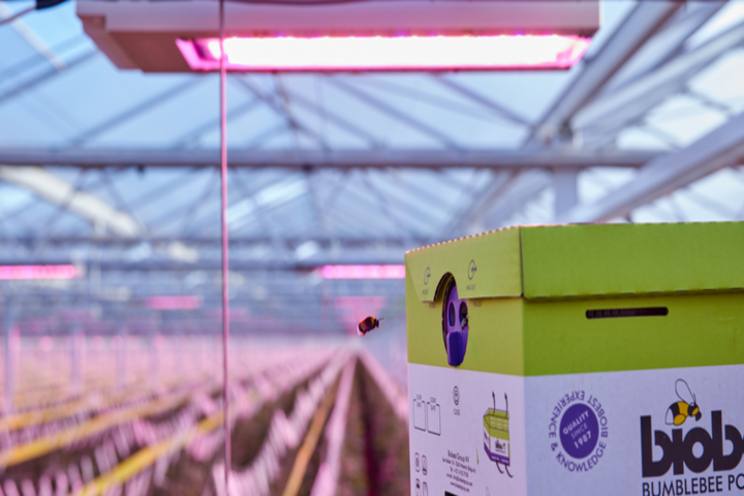Put premium lights on premium crops
Added on 25 May 2021

Hortis Group, based in the Ghent area, grows a number of varieties across 14 hectares (about 1.5 million ft2) at two sites, including 12 hectares in Sint-Gillis-Waas and 2 hectares in Moerzeke. Nothing brings in the profits more than the premium Vivolia plum tomato. So owner Dirk Willaert has focused his LED initiatives on those.
Willaert installed toplights over 2.5 hectares (about 269,000 ft2) and a control system from Signify last summer, in time for the winter growing season at the Sint-Gillis-Waas greenhouse.
Neither Willaert nor Signify would reveal how much he paid. But the price was such that Willaert did not consider the lights for anything other than the top-shelf plums. For Willaert, the LEDs were an all-or-nothing proposition, as he has not used artificial lighting of any sort — no high-pressure sodium (HPS), for instance — in the past. Rather, he has relied on sunlight.
"It makes sense to put premium tomatoes under LED light because of the financial investment such a system requires," Willaert said."There is more of a market for specialty tomatoes under LED than there is for beef tomatoes, for example."
By Willaert's account, the investment was worth it, as he is now planning to cover another 2.5 hectares of plum tomatoes in time for the 2021 winter growing season, again using Philips GreenPower LED toplighting and wired GrowWise controls from Signify.
"The light really makes a difference," said Willaert. "You can just mimic summer and thus shorten the growing time of the tomatoes. We placed the Vivolia plants in the greenhouse on Oct. 10 and we were able to harvest the first tomatoes just two months later. That was a positive surprise."
It's not clear how long he was expecting the growing period to take. The two months is comparable to unlit summer growing and is "really fast" compared to unlit winter growing, a Signify spokesperson told LEDs Magazine.
The toplights operate at 260 ?mol/m2/s, and the control system allows Willaert to turn the intensity of the light up on a cloudy day or down on a sunny day.
One consequence of the LEDs, however, is that they have effectively made bees less active because the lights increase humidity in the greenhouse, a condition which discourages the bees from staying out long, and thus reduces pollination, Signify suggested.
"The impact of artificial lighting on bumblebee behavior must be looked at more closely," Willaert said. Research from nearly a decade ago suggested that LEDs can have a positive effect on bees, at least compared to HPS lighting.
Whatever the exact reason, bee activity has dampened at Hortis. For now, Willaert's solution is straightforward. He is buying in more bees. Meanwhile, the story of LEDs' effects on pollinators remains an open book.
MARK HALPER is a contributing editor for LEDs Magazine, and an energy, technology, and business journalist (markhalper@aol.com).
Photo Caption: The LEDs brought out the best in the tomatoes, but the bees weren't so impressed, so Hortis Group is bringing in more of the pollinators. (Photo credit: Image courtesy of Signify.)
Source: LEDs Magazine
Source: LEDs Magazine
More news















